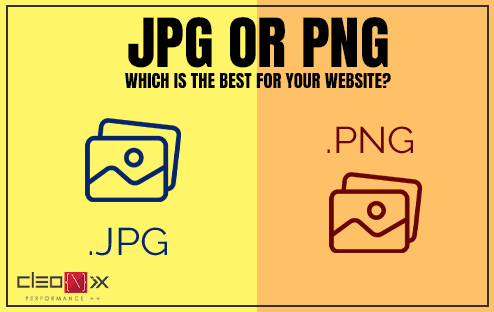
JPG or PNG: Which is the best for Your Website?
What is JPG / JPEG?
For images generated by digital photography, JPEG images are a common choice and are a useful option for images with complicated colors and shading.
While the quality loss is little perceptive with JPG’s 10:1 compression, the lower size makes JPEGs appropriate for internet use because it is useful for responsive presentation to reduce the quantity of information used for a picture.
What is PNG?
Known as Portable Network Graphics, the PNG image can be RGB/RGBA based on palettes, grayscale, and full color.
PNG file format was specifically designed to transfer images on the Internet rather than print graphics and therefore does not support non-RGB color spaces like CMYK.
You want the highest quality image format, but you also want a responsive website, so you really need to take into consideration the difference between jpeg and png and the difference in image compression in particular.
Think of it like this: Compression of images means reducing the size of the image without sacrificing the quality for the sake of size. Stronger compression is generally equivalent to smaller file size, which is equivalent to poorer image quality.
So you need to find the right balance between the quality and the size of your file if you want a good compression.
You see the finest version of it when you look at the picture saved on your computer because the file was not compressed. If the same image is on the website, however, it must be downloaded so that you can see it.
Logically, that implies the bigger the picture, the longer the time of charging.
There are a few important things to maintain in mind when speaking about JPG vs PNG.
PNG is the best option for charts, text pics, screenshots, and designs requiring transparency, such as logo models, etc. The greatest downside, though, is that they’re bigger and they’re going to slow down your website.
JPG, on the other hand, is smaller and quicker to load, but compression comes with some pleasant loss that isn’t normally a problem for photos, but it can be bad for text or photographs with satisfactory lines. Some first-rate is compromised when a picture is converted to a jpg. The purpose is because the compression is lossy, which means that certain useless facts are completely deleted. A jpg does, but, will let you create a smaller record length than you can with a png. A jpg ought to be used in any state of affairs while it’s critical to have a small file. A crucial benefit and many times deciding factor for the use of a png report is that–not like a jpg–they guide transparency. This lets in you to have a transparent heritage round an irregular-formed object and avoid a white (or other colored) field outlining your photo. In case you require transparency, you’ll surely want to choose a png. Record compression for a png is lossless. Just like the time period indicates, lossless compression keeps all the data contained in the file, inside the record, for the duration of the procedure. Lossless compression is important if you have photos which can be nevertheless in a modifying manner. On the grounds that both jpg and png layout have their professionals and cons, you ought to get the most out of each of them and play to their strengths.
 AJ 14, Salt Lake, Sector 2, Kolkata - 700091 |
AJ 14, Salt Lake, Sector 2, Kolkata - 700091 |  743 Virginia Ave NE Atlanta, GA 30306
743 Virginia Ave NE Atlanta, GA 30306

